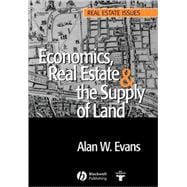
What is included with this book?
| Preface | xiii | ||||
|
1 | (10) | |||
|
1 | (3) | |||
|
4 | (3) | |||
|
7 | (4) | |||
|
11 | (20) | |||
|
11 | (1) | |||
|
12 | (1) | |||
|
13 | (3) | |||
|
16 | (1) | |||
|
17 | (4) | |||
|
21 | (2) | |||
|
23 | (2) | |||
|
25 | (3) | |||
|
28 | (3) | |||
|
31 | (16) | |||
|
31 | (1) | |||
|
32 | (2) | |||
|
34 | (4) | |||
|
38 | (1) | |||
|
39 | (6) | |||
|
45 | (2) | |||
|
47 | (14) | |||
|
47 | (1) | |||
|
48 | (1) | |||
|
48 | (4) | |||
|
52 | (2) | |||
|
54 | (6) | |||
|
60 | (1) | |||
|
61 | (16) | |||
|
61 | (1) | |||
|
61 | (3) | |||
|
64 | (3) | |||
|
67 | (8) | |||
|
75 | (2) | |||
|
77 | (12) | |||
|
77 | (1) | |||
|
78 | (6) | |||
|
84 | (3) | |||
|
87 | (2) | |||
|
89 | (10) | |||
|
89 | (1) | |||
|
89 | (6) | |||
|
95 | (2) | |||
|
97 | (2) | |||
|
99 | (16) | |||
|
99 | (1) | |||
|
100 | (5) | |||
|
105 | (7) | |||
|
112 | (3) | |||
|
115 | (12) | |||
|
115 | (1) | |||
|
115 | (2) | |||
|
117 | (5) | |||
|
122 | (3) | |||
|
125 | (2) | |||
| 10 Ownership and Control: Monopoly | 127 | (10) | |||
|
127 | (1) | |||
|
127 | (3) | |||
|
130 | (4) | |||
|
134 | (3) | |||
| 11 Ownership and Control: Minimum Rents | 137 | (12) | |||
|
137 | (1) | |||
|
138 | (5) | |||
|
143 | (5) | |||
|
148 | (1) | |||
| 12 Information, Uncertainty and the Property Market | 149 | (20) | |||
|
149 | (2) | |||
|
151 | (2) | |||
|
153 | (5) | |||
|
158 | (4) | |||
|
162 | (3) | |||
|
165 | (2) | |||
|
167 | (2) | |||
| 13 Land Availability and Land Banking | 169 | (18) | |||
|
169 | (1) | |||
|
170 | (5) | |||
|
175 | (6) | |||
|
181 | (4) | |||
|
185 | (2) | |||
| 14 Contiguity: Site Assembly | 187 | (10) | |||
|
187 | (1) | |||
|
188 | (4) | |||
|
192 | (2) | |||
|
194 | (3) | |||
| 15 Contiguity: Compulsory Purchase and the Scale of Development | 197 | (14) | |||
|
197 | (1) | |||
|
198 | (6) | |||
|
204 | (4) | |||
|
208 | (3) | |||
| 16 Contiguity: Land Reallocation and the Price of Land | 211 | (8) | |||
|
211 | (1) | |||
|
211 | (4) | |||
|
215 | (2) | |||
|
217 | (2) | |||
| 17 The Taxation of Land and Development Gains | 219 | (14) | |||
|
219 | (1) | |||
|
220 | (3) | |||
|
223 | (2) | |||
|
225 | (3) | |||
|
228 | (3) | |||
|
231 | (2) | |||
| 18 Annual Taxation and the Nationalisation of Land | 233 | (12) | |||
|
233 | (1) | |||
|
234 | (2) | |||
|
236 | (2) | |||
|
238 | (4) | |||
|
242 | (3) | |||
| 19 Conclusion: Themes and Changes in Perception | 245 | (4) | |||
|
245 | (2) | |||
|
247 | (2) | |||
| References | 249 | (7) | |||
| Index | 256 |
The New copy of this book will include any supplemental materials advertised. Please check the title of the book to determine if it should include any access cards, study guides, lab manuals, CDs, etc.
The Used, Rental and eBook copies of this book are not guaranteed to include any supplemental materials. Typically, only the book itself is included. This is true even if the title states it includes any access cards, study guides, lab manuals, CDs, etc.